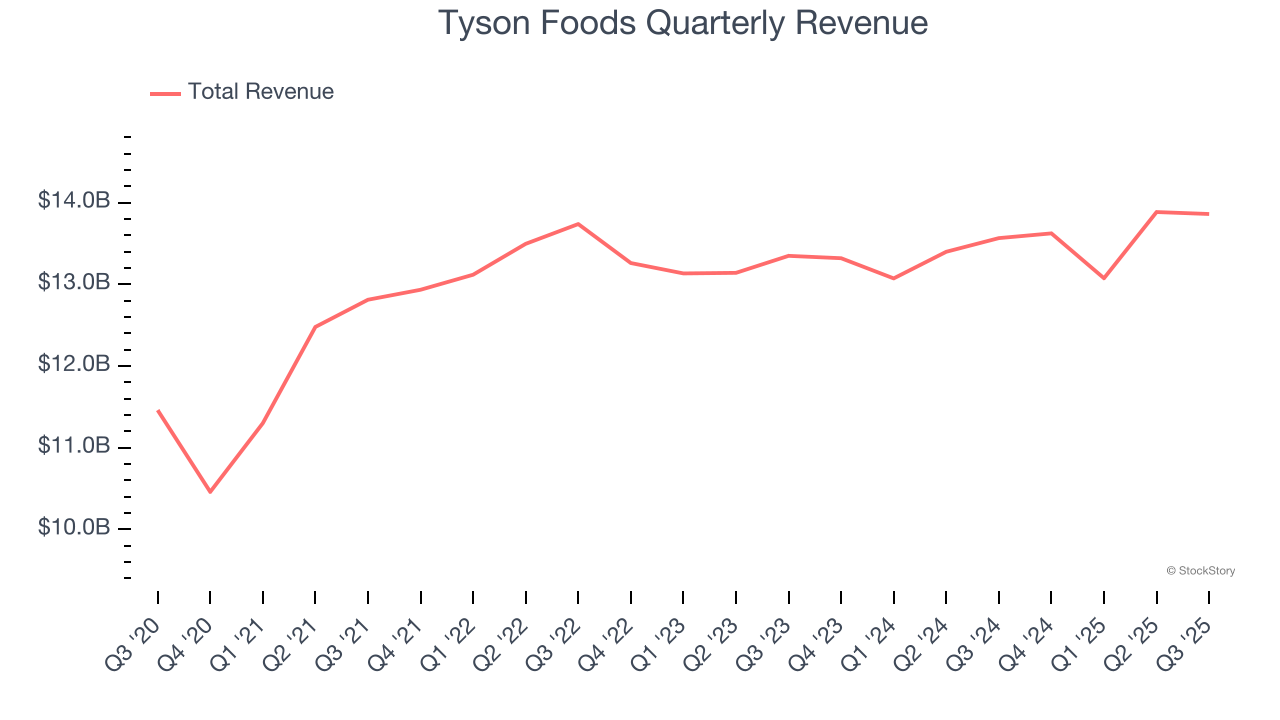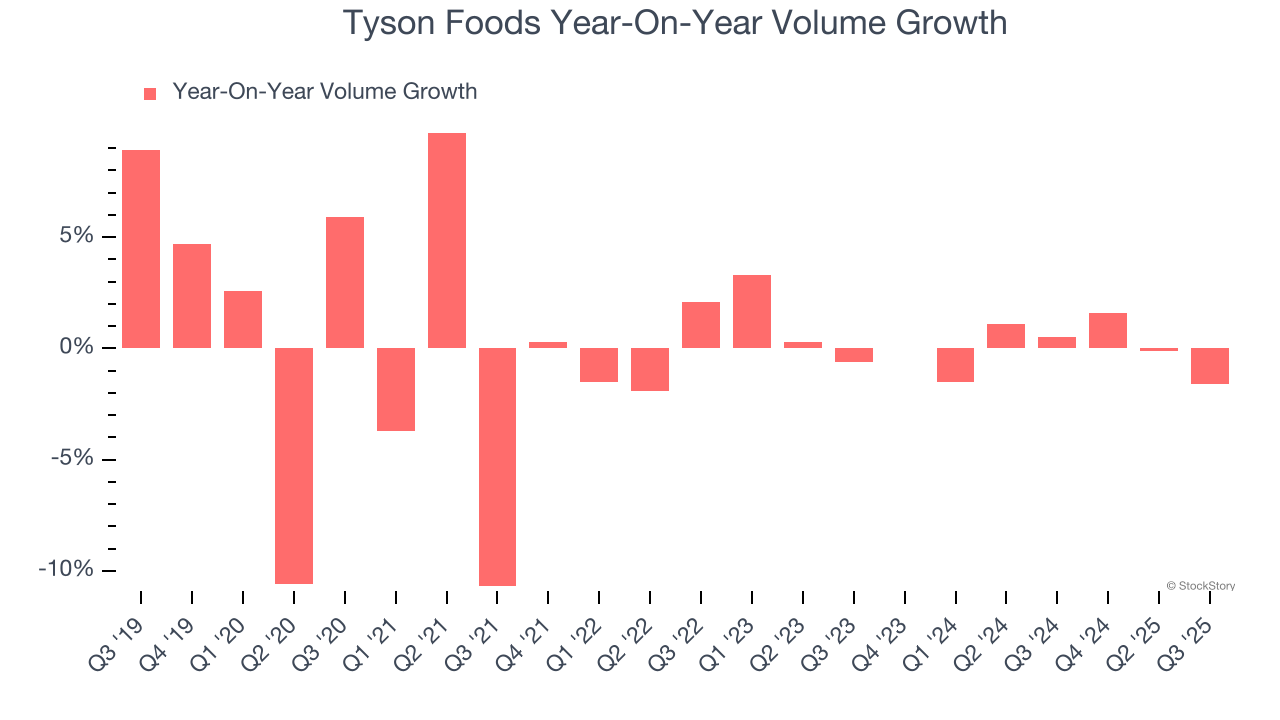
Meat company Tyson Foods (NYSE:TSN) fell short of the markets revenue expectations in Q3 CY2025 as sales rose 2.2% year on year to $13.86 billion. Its non-GAAP profit of $1.15 per share was 37.8% above analysts’ consensus estimates.
Is now the time to buy Tyson Foods? Find out by accessing our full research report, it’s free for active Edge members.
Tyson Foods (TSN) Q3 CY2025 Highlights:
- Revenue: $13.86 billion vs analyst estimates of $14.01 billion (2.2% year-on-year growth, 1.1% miss)
- Adjusted EPS: $1.15 vs analyst estimates of $0.83 (37.8% beat)
- Operating Margin: 1.1%, down from 3.9% in the same quarter last year
- Free Cash Flow Margin: 8.5%, up from 2.7% in the same quarter last year
- Sales Volumes fell 1.6% year on year (0.5% in the same quarter last year)
- Market Capitalization: $18.74 billion
"We delivered year-over-year growth in sales, adjusted operating income and adjusted earnings per share, reflecting the strength of our multi-protein, multi-channel portfolio," said Donnie King, President and CEO of Tyson Foods.
Company Overview
Started as a simple trucking business, Tyson Foods (NYSE:TSN) is one of the world’s largest producers of chicken, beef, and pork.
Revenue Growth
A company’s long-term performance is an indicator of its overall quality. Even a bad business can shine for one or two quarters, but a top-tier one grows for years.
With $54.44 billion in revenue over the past 12 months, Tyson Foods is one of the most widely recognized consumer staples companies. Its influence over consumers gives it negotiating leverage with distributors, enabling it to pick and choose where it sells its products (a luxury many don’t have). However, its scale is a double-edged sword because there are only a finite number of major retail partners, placing a ceiling on its growth. For Tyson Foods to boost its sales, it likely needs to adjust its prices, launch new offerings, or lean into foreign markets.
As you can see below, Tyson Foods struggled to increase demand as its $54.44 billion of sales for the trailing 12 months was close to its revenue three years ago. This shows demand was soft, a poor baseline for our analysis.

This quarter, Tyson Foods’s revenue grew by 2.2% year on year to $13.86 billion, falling short of Wall Street’s estimates.
Looking ahead, sell-side analysts expect revenue to grow 2.2% over the next 12 months. Although this projection indicates its newer products will catalyze better top-line performance, it is still below average for the sector.
While Wall Street chases Nvidia at all-time highs, an under-the-radar semiconductor supplier is dominating a critical AI component these giants can’t build without. Click here to access our free report one of our favorites growth stories.
Volume Growth
Revenue growth can be broken down into changes in price and volume (the number of units sold). While both are important, volume is the lifeblood of a successful staples business as there’s a ceiling to what consumers will pay for everyday goods; they can always trade down to non-branded products if the branded versions are too expensive.
Tyson Foods’s quarterly sales volumes have, on average, stayed about the same over the last two years. This stability is normal because the quantity demanded for consumer staples products typically doesn’t see much volatility. 
In Tyson Foods’s Q3 2025, sales volumes dropped 1.6% year on year.
Key Takeaways from Tyson Foods’s Q3 Results
It was good to see Tyson Foods beat analysts’ EPS expectations this quarter. On the other hand, its revenue fell short of Wall Street’s estimates. Overall, this quarter was mixed. The stock traded up 3.7% to $54.62 immediately following the results.
Big picture, is Tyson Foods a buy here and now? The latest quarter does matter, but not nearly as much as longer-term fundamentals and valuation, when deciding if the stock is a buy. We cover that in our actionable full research report which you can read here, it’s free for active Edge members.
